Home | Front Page | Index | Blog | New | Contact | Site Map
California | Photos | Map
Los Angeles:
Doings | Eatin' | Bldgs | More | Hancock Park
Caltech:
Campus | Reunion | Lloyd House | JPL
Yosemite Valley
Yosemite Falls
Nevada Fall

Britain 2002
USA 2001
USA 2002
USA 2003
Virginia
North Carolina
South Carolina
Georgia
Florida
Alabama
Louisiana
Texas
Arizona
California
Nevada
Index 1999-2002
Index 2002-2003
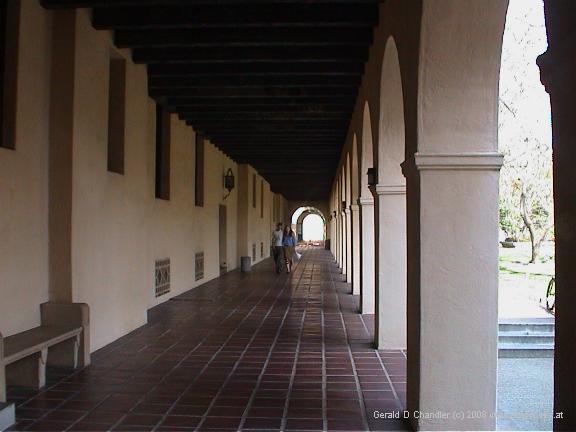
Covered walkway in Spanish style building outside Arms Laboratory |
Caltech, or more formally, The California Institute of Technology, took its current name in 1921. Its immediate predecessor organization, Throop Polytechnic Institute, started life as a prep school for boys. Probably the boys of rich retirees or their grandsons. In about 1876-87 there was a great land boom in Southern California, fueled in part by rail fares that fell as low as $1 (do I remember right?) for transport from the eastern USA. Many rich men were attracted to the area to spend the winter, or for their health, or many similar reasons. In any event, some of these founded Throop and then forty years later converted it into what would grow to be one of the pre-eminent engineering and scientific institutions.
When Gerry enrolled (or matriculated, a word new to him at the time), in 1959, Caltech (please don't write Cal Tech), was still a young adult, only 38 years old. The campus was tiny compared to major California universities and had a unified, Spanish Renaisannce look. The original plans called for all buildings to be of this style, but some variations occured because there was not enough money to build them all at once. Naturally, the later buildings incorporated changes of taste and thus small discordances were introduced.
The west end of campus was the science and academic end. At the west end on the north and south sides of a long mall were the (single) geology and biology buildings.

North archway connecting Dabney and Gates |
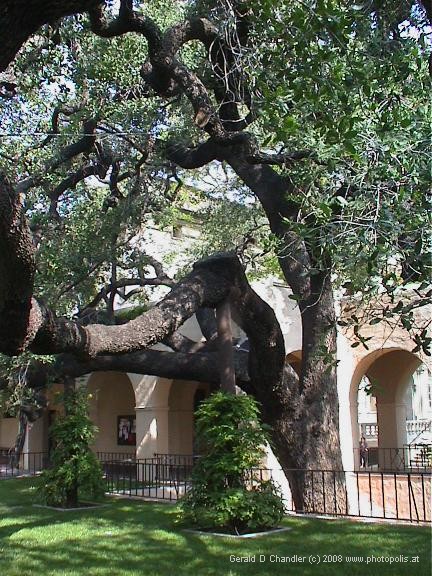
Live oak between Gates and Dabney |
Farther east, at what was then the center of campus, was a square, largely define by free standing covered walkways, supported by columns topped with rounded arches. One of these connects Dabney and Gates. Dabney was the site of all of Gerry's humanities classes. He is tempted to say it is where he learned to write; it is more accurate to say it is where the assignments were given that forced him to learn to write. At the other end of the walkway mentioned is Gates. During Gerry's years it housed the Freshman chemistry laboratory. There he learned that distilled water can come out of a pipe. And that even if it was late Friday afternoon he couldn't go home until the assignment was done. Near the walkway stands a live oak; Gerry will always remember this tree as one day as a student he sat down and sketched it. Although he thought it was a reasonable job, his artistic career went no further.
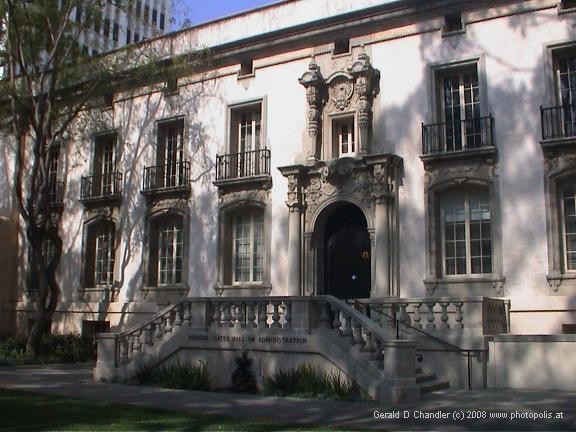
Gates Laboratories |
Gates Chemical Laboratories was damaged during an earth quake and subsequently repaired, renamed as Parsons-Gates, and recycled as an administration building.
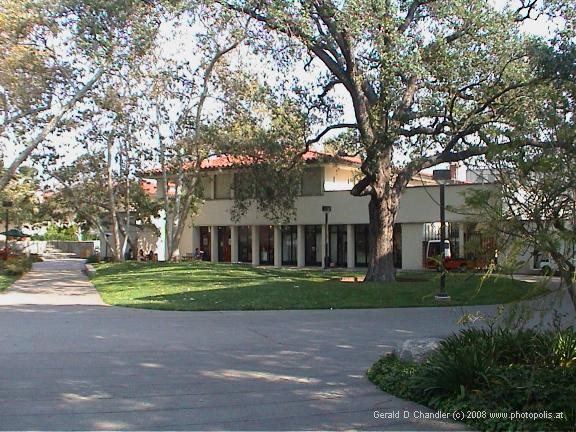
Physical Plant building |
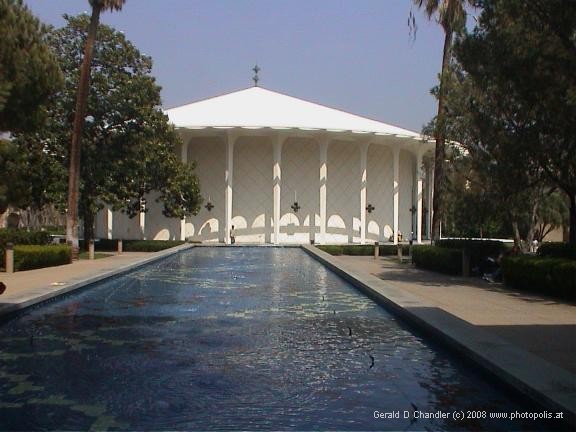
Beckman Auditorium by architect Edward Durell Stone |
During Gerry's four years he saw the campus grow and grow. He benefitted by the the addition of Lloyd House and other dormitories; that allowed him to move onto campus. North of Pasqual Street, then open to traffic and once the northern border of the campus, a neo-modern Spanish Renaissance, Physical Plant Building was built about 1960. Shortly thereafter Caltech got a long needed (Beckman) auditorium in the completely discongrous austere modern style of Edward Durell Stone.
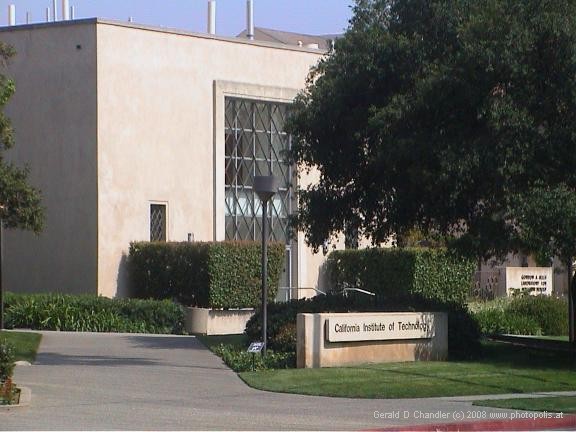
Revitalized Kerkoff Labs, seen from Wilson Avenue |
Now, at our latest visit, Caltech has more than doubled its age, to 82. In the last ten years it has continued to grow. There is no longer much unity to the campus. It is too late to hope for that. In some cases there have been face lifts, and as with humans, it is hard to know if one should approve. The skin is certainly tighter but the patina is gone. Such is the case with old Kerkoff, which now strikes someknow who knew it as it was as a bit of pretense.
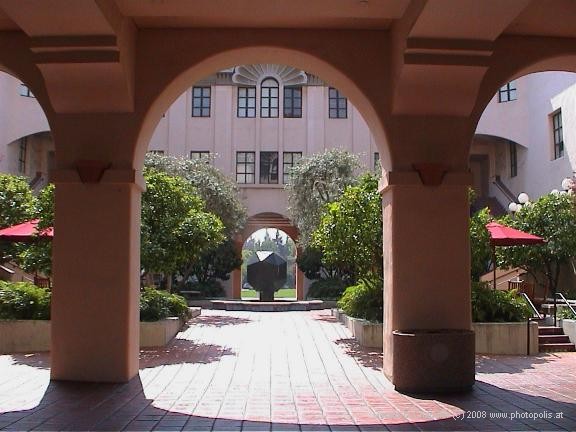
Beckman Institute |
We particularly wanted to see two new buildings that we had read about over the years in the Alumni news. One was the Beckman Institute, post modern neo Spanish Renaissance. That, we are happy to say, pleased us.

Post modern biology building |
The other was a very large biology research. It alone must have three times the space that was available to the Biology Department when Gerry was a student. It is very post modern and not Spanish Renaissance. Here is there is some difference in our judgement. Jan, like her evaluation of the new Ghery building, is entirely negative. Gerry says it has some positive aspects. He thinks, like impressionism, the world could learn to love it.